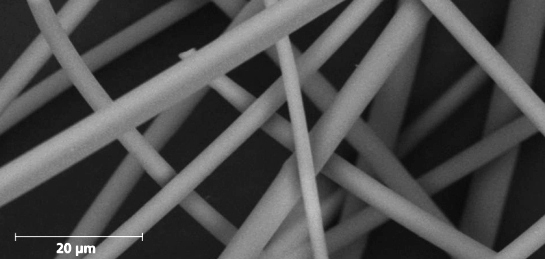Alumino Silicate Wool (ASW/RCF) is often likened to asbestos; is that comparison correct? NO.
Alumino Silicate Wool, a machine-made vitreous fibre, is produced from molten mineral raw material with a particular composition, made into wool by centrifugation, blowing or spraying.
The diameter of the individual fibres in the wools is determined by the production process and is not changed later by machining or further processing. When individual fibres break they do so transversely, across the fibre producing shorter fragments without greatly altering the diameter of the fibre.
Asbestos, on the other hand, is the generic name given to a range of natural fibrous silicate minerals. Based on its crystalline structure and chemical composition, asbestos is divided into two main groups; serpentine (main representative being chrysotile or white asbestos) and amphibole (main representatives being crocidolite or blue asbestos, amosite and tremolite).
In contrast to ASW/RCF, the crystalline structure of asbestos fibres allows fibres to split longitudinally into thinner fibrils. This clevage mechanism makes it difficult for the bodies natural clearance processess to remove the thin asbestos fibres as the length does not siginificantly change.
Fibre diameter is a very important factor that plays a significant role in exposure. The thinner the fibre the more chance it has to reach the deep lung. This, combined with the high biopersistence of amphibole asbestos, for example, results in very high doses reaching the deep lung and remaining there for an extremely long period of time.
Furthermore, the thinner the fibre the longer it can remain airborne, increasing overall dust exposure levels.
ASW/RCF fibres are much thicker than asbestos and are therefore less respirable; also they remain airborne for shorter periods so that handling ASW/RCF products generates far less airborne dust – as shown in the epidemiological studies where cumulative exposures have been measured.
The concept of dose to the target organ – the lung burden – also takes into consideration the biopersistence of the fibre. Biopersistence of ASW/RCF is about 10 to 15 times less than that of amphibole asbestos. This means that amounts of ASW/RCF in the lungs of workers are far less than the burdens experienced in the past by asbestos workers.
Experts agree that, in the end, it is the dose that matters when it comes to evaluating the risk. Taking into consideration the various parameters mentioned above, the estimated relative risk potential for ASW/RCF is about 800 times lower than that for amphibole asbestos.
Asbestos Problem
The hazardous nature of asbestos was recognized very late on account of its long latency period. This, in connection with the widespread use of asbestos products, led to severe diseases of large groups of the population.
While significant levels of disease have been observed in workers exposed to asbestos after 10 to 40 years, no lung fibrosis or lung cancer has been found in workers exposed to ASW/RCF, even after more than 60 years of production.
Experience with ASW/RCF
In the case of ASW/RCF, only a small group of trained employees in the industrial sector handles the products. The existing regulations for handling ASW/RCF are based on realizations concerning the handling of asbestos.
Important Fact
After more than 60 years of commercial application, there is no single known case of fibrosis, lung cancer or mesothelioma worldwide connected to the exposure to ASW/RCF.


